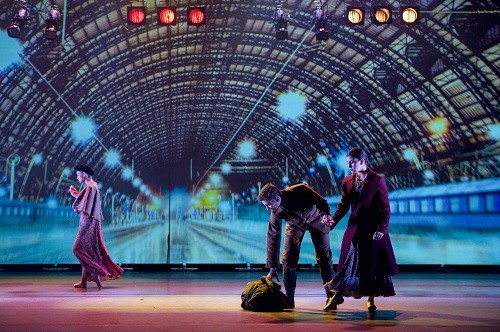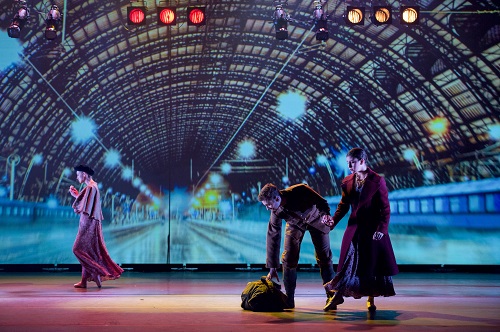 United Kingdom New English Ballet Theatre – Remembrance/The Four Seasons: Peacock Theatre, London, 28.9.2018. (JO’D)
United Kingdom New English Ballet Theatre – Remembrance/The Four Seasons: Peacock Theatre, London, 28.9.2018. (JO’D)

Dancers – Sophie Allnatt, Giuditta Banchetti, Kevin Bhoyroo, Camilla Chiesi, Lorenzo Epifani, Ermelinda Giacometti, Christina Rebecca Gibbs, Benjamin Holloway, Alessia Lugoboni, Andrea Marcelletti, Alexander Nuttall, Dean Rushton, Aitor Viscarolasaga Lopez
Music – George Frideric Handel, Ode for Saint Celia’s Day sung by The Erebus Ensemble
Musicians (Remembrance) – The English Consort, Director/Harpsichord Harry Bicket
Choreography – Jenna Lee (The Four Seasons); Wayne Eagling (Remembrance)
Costume Design – April Dalton
Lighting Design – Andrew Ellis
Set Design (Remembrance) – Nina Kobiashvili
Across the two works presented in what is New English Ballet Theatre’s seventh season, lighting, costume, set design and live music are all effective and assured. Dancing and choreography, on the other hand, tend to waver. Jenna Lee’s The Four Seasons and Wayne Eagling’s Remembrance are ambitious pieces for this young company. The first also suffers from rather leaden, recorded music (Max Richter’s re-composition of Vivaldi), the second from a lack of narrative.
Against lighting designer Andrew Ellis’s background of soft, changing colour, thirteen dancers in The Four Seasons combine the steps of classical ballet with movements from contemporary dance, ice-skating and gymnastics. The women might adopt the retiré position or be spun on their backs on the floor by their partners. The men execute deep pliés, then crawl on all fours. Carefully held ballet-fingers suddenly splay. As a movement style it can, at times, be ugly: the dancers often look as if they were working at it rather than performing it. This is not the case, however, with Sophie Allnatt and Benjamin Holloway during a Summer duet.
Created to mark the centenary of the armistice that ended the First World War, Wayne Eagling’s Remembrance is an odd mixture: Handel’s Ode for St. Celia’s Day (performed live by the musicians and singers of The Erebus Ensemble) and the war-time experience of Marie Rambert, who seems to have been chosen as a focus for no better reason than that she was connected to dance and she was there.
It starts with the wedding of Rambert and Ashley Dukes. This is followed by a scene in a dance studio not dissimilar to the opening of the choreographer’s English National Ballet Nutcracker in its bustle of activity and its interweaving of acting and dance. Dance teacher Serafina Ashtafieva wields a cigarette holder, in homage perhaps to the Hostess of Nijinska’s Les Biches. Then Dukes receives his call-up telegram and what narrative there is peters out. Not actively associated with the First World War as Vera Brittain, say, is associated with it, Rambert can only wait and hope.
She does this in the company of five other women. The dance they perform is the most affecting of the ballet. Their simultaneous rise en pointe is redolent of the moment Clara first performs that step in Nutcracker: the moment when the dream world takes over the ‘real’. Their bourrée into line, reminds one of the Muses in Balanchine’s Apollo or the women in MacMillan’s Song of the Earth. Rather than using it for merely visual effect, Wayne Eagling, too, understands the power of the bourrée.
Alessia Lugoboni, as Rambert, is a forceful actress-dancer. April Dalton’s attractive, movement-friendly costumes capture the period. Set designer Nina Kobiashvili makes resourceful use of blown-up photographs to evoke Waterloo Station and a war-torn village in France. The singers of The Erebus Ensemble, on stage and grouped around the auditorium, have presence. None of this can make up for the sense of something arbitrary, something that does not cohere, in the piece as a whole.
John O’Dwyer
